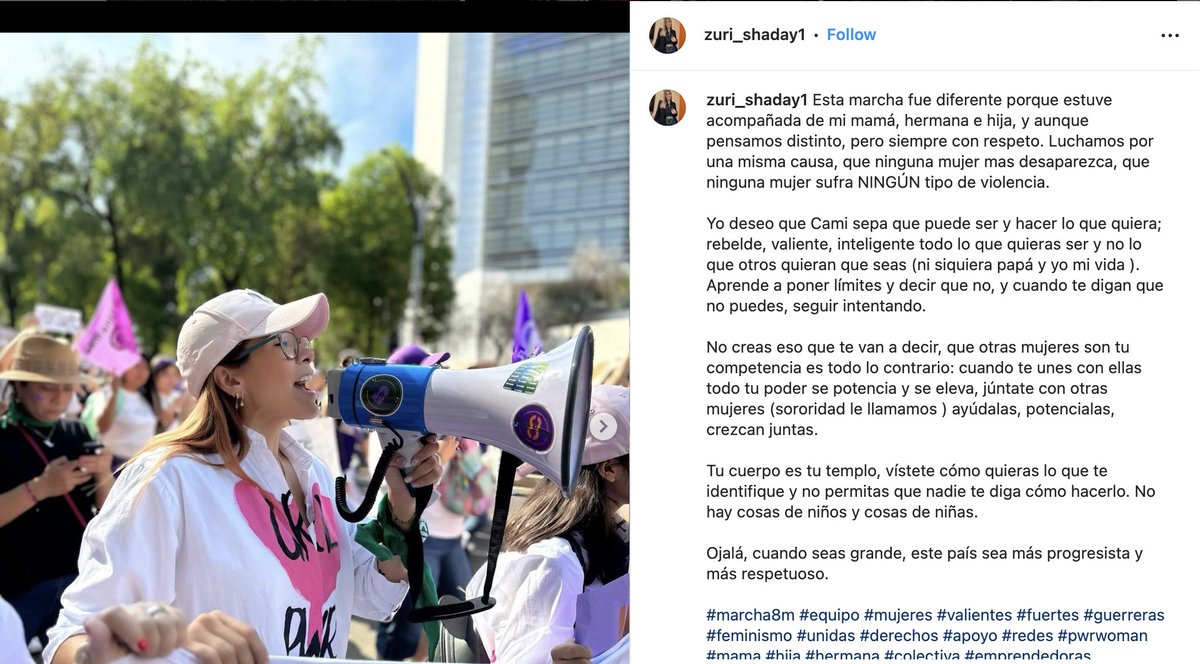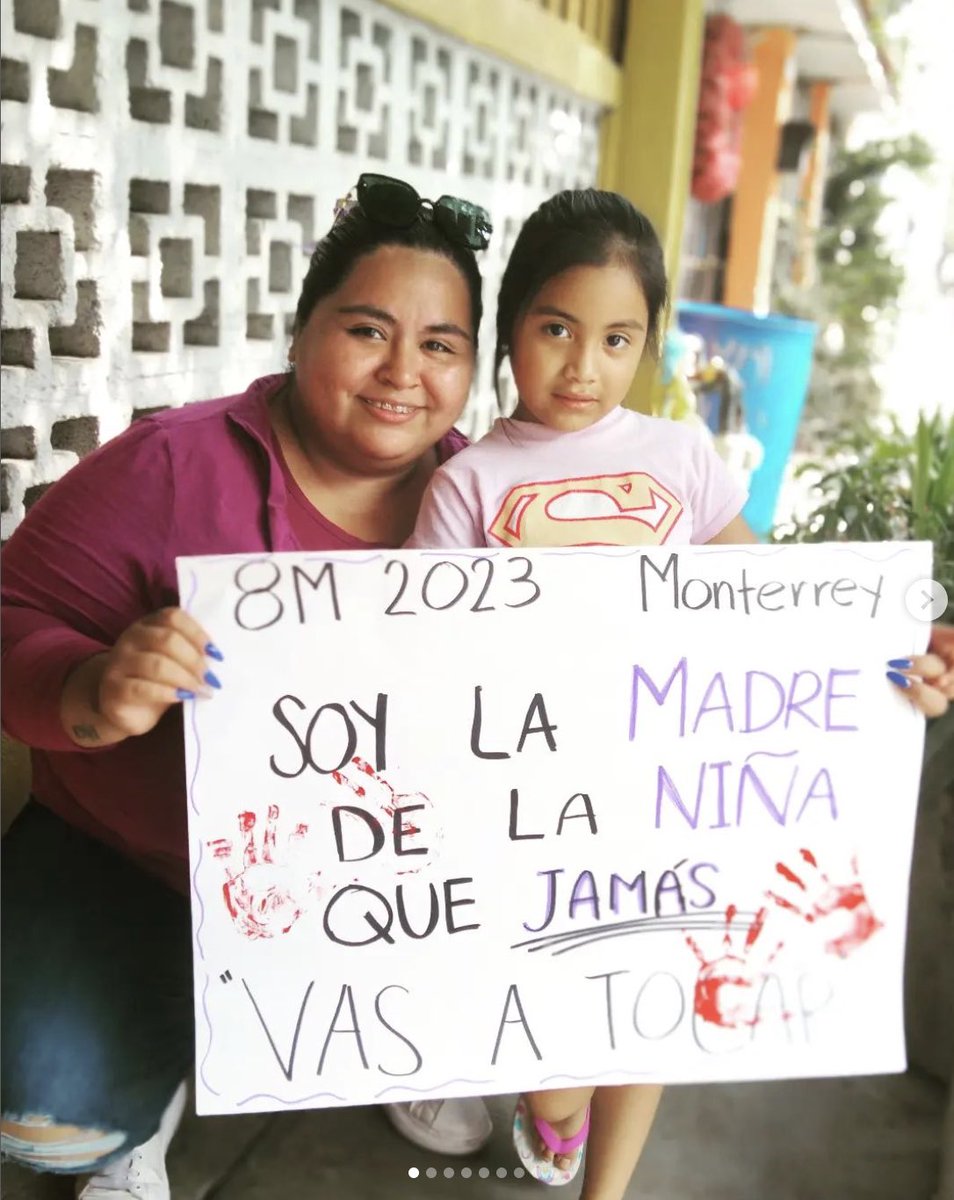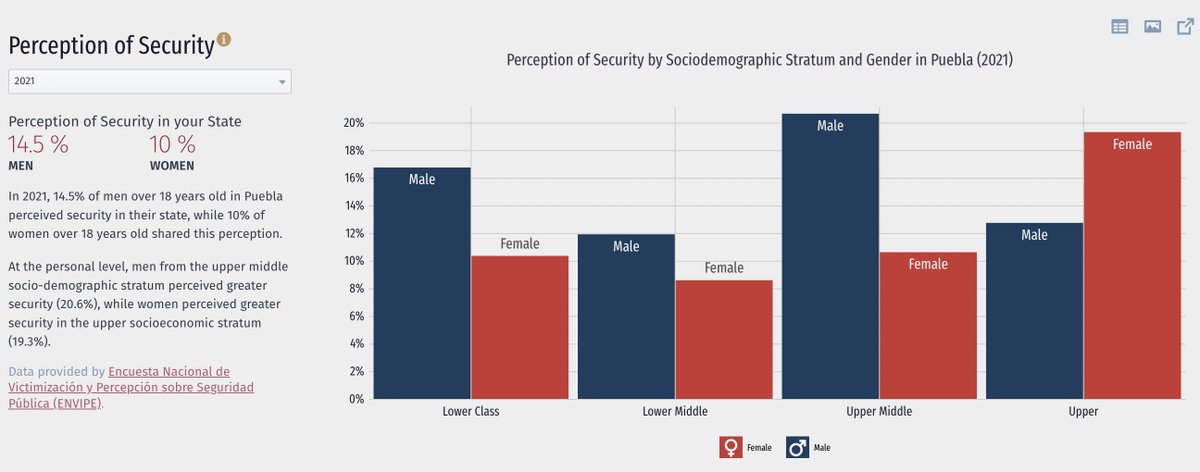
Thousands marched for #March8M; what did they want?
Here’s a popular post on IG:
I am a woman & I do not need
- a partner to be complete
- children
- be a rehabilitation center for my partner
- your opinion about my body
- yearn to marry
- abandon my project to fit with others
Here’s a popular post on IG:
I am a woman & I do not need
- a partner to be complete
- children
- be a rehabilitation center for my partner
- your opinion about my body
- yearn to marry
- abandon my project to fit with others

“We fight for the same cause, that no women suffer ANY type of violence.
I want Cami to know that she can do whatever she wants; rebellious, brave, intelligent.. not what others want you to be. She learns to set limits and say no, and when they tell you you can't, keep trying”.
I want Cami to know that she can do whatever she wants; rebellious, brave, intelligent.. not what others want you to be. She learns to set limits and say no, and when they tell you you can't, keep trying”.

“My first time marching and my DAUGHTER was my main reason
-I am the mother of the girl you will never touch 💜💜💜
MARCHED for all those who could not go, for all those who are not yet ready to go out and shout, I was the cry of all”
instagram.com/p/CplVYAApxz_/
-I am the mother of the girl you will never touch 💜💜💜
MARCHED for all those who could not go, for all those who are not yet ready to go out and shout, I was the cry of all”
instagram.com/p/CplVYAApxz_/

Reading the the instagram posts tagged #Marcha8M,
I see two common feminist critiques:
- Gender stereotypes (women should be mothers or delicate/ princesses)
- Impunity for male violence.
The overwhelming push is for freedom of self-actualisation and freedom from violence.
I see two common feminist critiques:
- Gender stereotypes (women should be mothers or delicate/ princesses)
- Impunity for male violence.
The overwhelming push is for freedom of self-actualisation and freedom from violence.

I have not really seen discussions about
- specific government policies (like a short school day)
- economic outcomes (eg gender pay gaps)
- gender identity
The onus is very much on a rejection of Catholic ideals of maternalism and male violence.
- specific government policies (like a short school day)
- economic outcomes (eg gender pay gaps)
- gender identity
The onus is very much on a rejection of Catholic ideals of maternalism and male violence.
As always, the marches have triggered conservative backlash
Mexican feminists reply:
“That’s because you are frightened by those who fight and not by those who die”
instagram.com/p/CpgloVOvzKh/
Mexican feminists reply:
“That’s because you are frightened by those who fight and not by those who die”
instagram.com/p/CpgloVOvzKh/

Feminist marches can break what I call the “Despondency Trap”.
If women stay afraid & silent, then male violence persists with impunity.
By conveying wider support & legitimacy, marches can embolden greater defiance.
This text provides a key insight:
Cc @AlessandraVoena
If women stay afraid & silent, then male violence persists with impunity.
By conveying wider support & legitimacy, marches can embolden greater defiance.
This text provides a key insight:
Cc @AlessandraVoena

Even in a very interconnected world of social media,
It’s striking that the Mexican feminist banners and protest slogans all emphasise local priorities, principally freedom from maternalism & male violence.
Very different from current discourses among progressives in the US.
It’s striking that the Mexican feminist banners and protest slogans all emphasise local priorities, principally freedom from maternalism & male violence.
Very different from current discourses among progressives in the US.
• • •
Missing some Tweet in this thread? You can try to
force a refresh
























